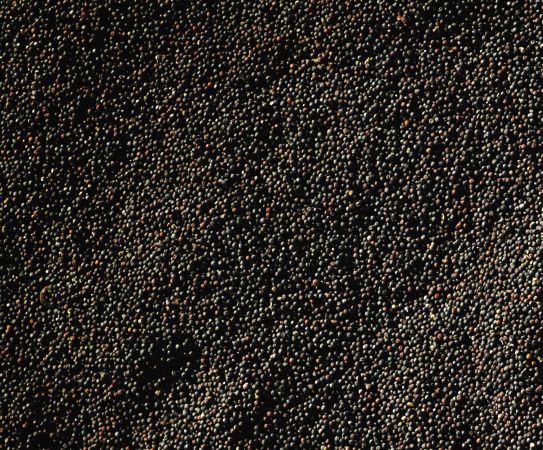Since higher oil content canola has less dry matter content in each kernel than lower oil content canola, it is prone to spoiling more quickly. On top of that, last year’s record harvest, coupled with nationwide transportation issues, means that crops are sitting in storage longer than usual and causing great concern to growers.
Dr. Digvir Jayas, vice-president (research and international) and distinguished professor at the University of Manitoba, has conducted a number of studies whose results should help mitigate loss to spoilage.
“Oil can’t hold water, says Jayas, “which is why, with high oil crops, you have to store them at a much lower moisture content than you would store lower content crops.”
Read Also

Cancer agency reclassifies another herbicide ‘probably carcinogenic’
The WHO’s cancer research agency has now put atrazine, a herbicide well known to corn growers, in the same potential-hazard category where the agency put glyphosate.
While the recommended safe moisture content level for wheat is somewhere around 13 per cent, it’s much lower in canola, around eight to 8.5 per cent, says Jayas. Storing at these lower moisture levels, he says, “will give you longer storage life.”
- More Grainews: Moisture, insects depreciating Prairie crop quality
Canola storage research
In recent years, Jayas conducted a study comparing high oil content canola to lower oil content canola. As expected, the study found that the high oil content canola was subject to spoilage slightly faster than the lower oil content canola.
“Statistically, the difference wasn’t that significant, but you can see the trend,” says Jayas. “As the oil content of canola keeps increasing, eventually it would start showing that the higher the oil content, the lower the moisture content required for safe storage.”
In another study, Jayas tested three high canola hybrids — NX4-105 (45.4 per cent), InVigor 5540 (47.1 per cent), and 45H29 (45.4 per cent) — at four moisture content levels: eight, 10, 12 and 14 per cent.
The hybrids were stored in small-scale chambers where both temperature and humidity could be controlled. Contents were tested at 10 C, 20 C, 30 C and 40 C.
The higher oil content canola showed a decrease in germination. Similarly, increases in free fatty acid values also started happening sooner in high oil canola than in lower content canola.
“So it’s showing the trend that higher oil content is initiating that spoilage sooner than the lower oil content canola under the same conditions,” says Jayas.
Finally, Jayas also tested storage at different moisture content levels in silo bags. Not surprisingly, canola stored at 14 per cent moisture content was more likely to spoil. At 10 per cent, they were able to store it safely for up to 10 months with some drop in grade. At eight per cent per cent, no grade loss was experienced and the quality of the grain did not change.
Jayas also tested the lifespan of canola at 12 per cent moisture content stored in silo bags. The first bags were unsealed as early as March, where it was found that canola maintained grade. Bags opened five to six weeks later in mid-April, on average, lost a grade. Bags opened as late as August could only be sold as feed.
Based on the results of his study, Jayas recommends storing canola at moisture content levels no higher than eight per cent, especially if the goal is to store it for more than the usual 10 months. Even at eight per cent moisture, though, canola should still be monitored, he says, but probably not as often as you would monitor canola stored at a higher moisture content level.
Warm it slowly
Joy Agnew, Project Manager at Prairie Agricultural Machinery Institute agrees. Last year’s record harvest, combined with nationwide transportation issues, means that grain has been stored far longer than usual in Western Canada. This has caused growers great concern.
Cool grain is likely going to experience spoilage as bins warm in the sun, says Agnew. “Anytime you have temperature variations, there are going to be moisture variations and moisture migration, which can potentially lead to spoilage,” she says.
As the warm air outside warms the grain closest to the bin wall, convection currents are formed. When cool grain comes in contact with warn grain, condensation can form, which can result in spoilage.
To avoid this, growers should warm their grain slowly, says Agnew, who recommends gradually running fans when the outside air is less than 10 degrees warmer than the grain itself. The time it will take to equalize temperatures will depend on the size of the bin and the fan size.
“The lower the temperature difference between the air and the grain at the end of the warming process, the better,” says Agnew. “But you don’t want to increase the grain temperature above 15 C. Maintaining a grain temperature of 15 C throughout the summer should minimize the risk of convection currents and condensation on the bin walls.”
















